#pen drawing on gampi paper
Text

D-23.Jan.2018
Takahiko Hayashi 林孝彦 2019
pigment acrylic ink on paper/ original emulsion base
image size: 42.2x28.0cm (Japanese Gampi paper)
paper size: 54.0x39.3cm (Hahnemuhle5761)
#林孝彦#data organization 2023#available#inventory hidaka#2018takahiko hayashi#pen drawing on gampi paper#blue
149 notes
·
View notes
Photo
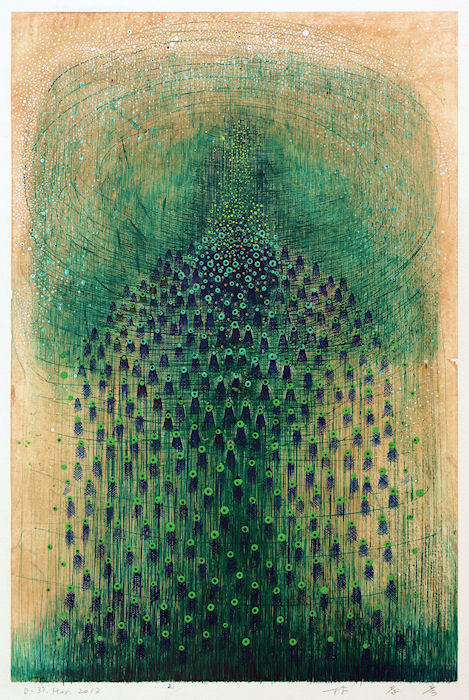
HAYASHI Takahiko 林孝彦
pen drawing on Gampi paper
18 notes
·
View notes
Photo

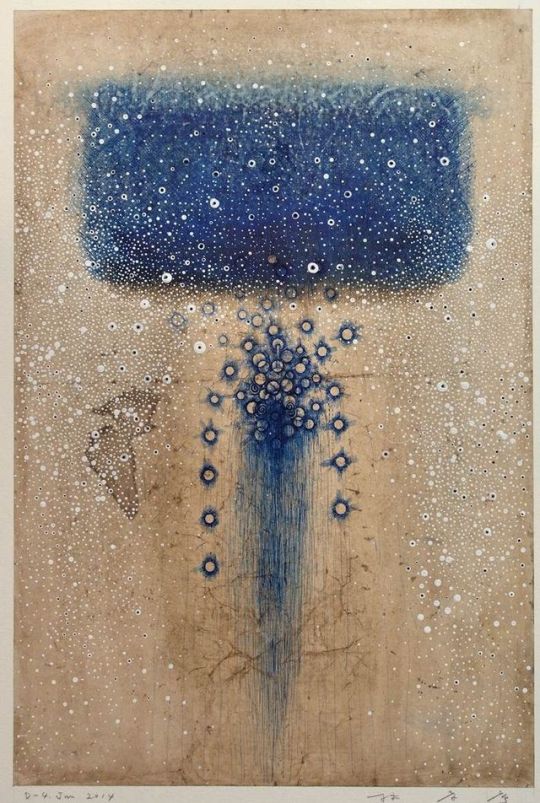
Hayashi Takahiko (Japanese b. 1961). This artist has had shows in Portland, and I hope to see some of his work in person on my next trip there. I have lots of questions about his technique; for example, what kind of pen does he use? (The blue looks an awful lot like ballpoint.) I particularly appreciate the way he subtly undermines the symmetry of the image by including small elements that break the pattern.
D-17 Apr. 2014 2014. Ink (pen drawing) on gampi paper mounted onto Hahnemühle paper, 16 3/8 x 11 1/16 inches. Source.
D-4 Jun. 2014. Ink (pen drawing) on gampi paper mounted onto Hahnemühle paper, (size?). Source.
1 note
·
View note
Photo
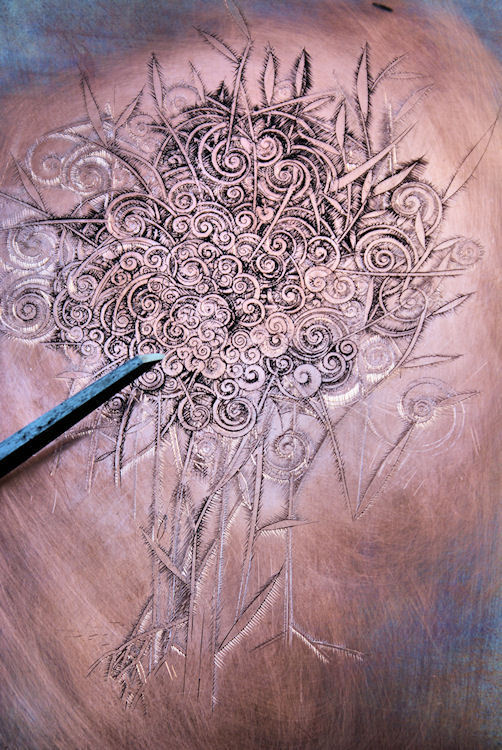

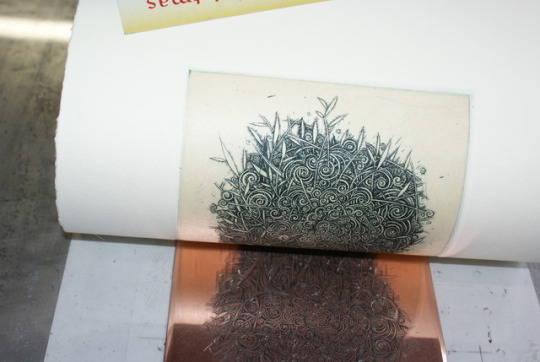
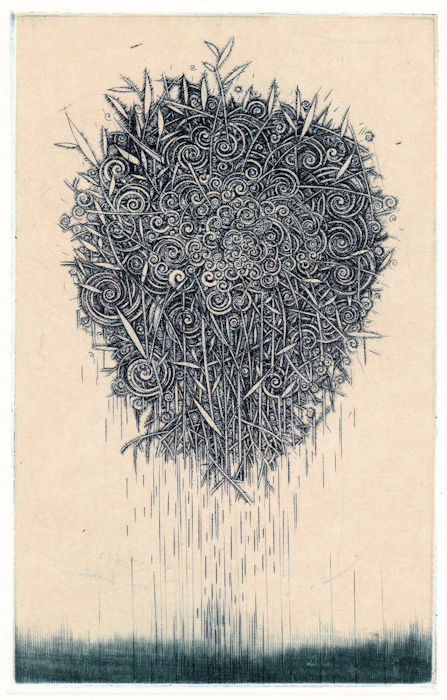
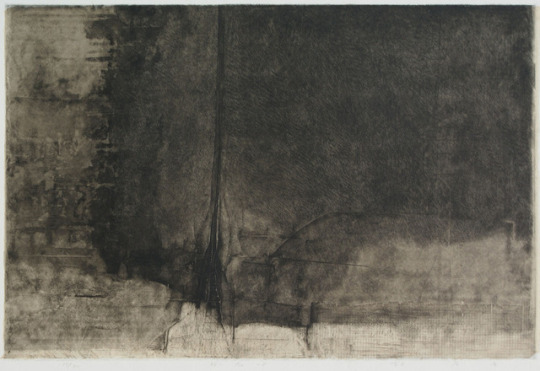
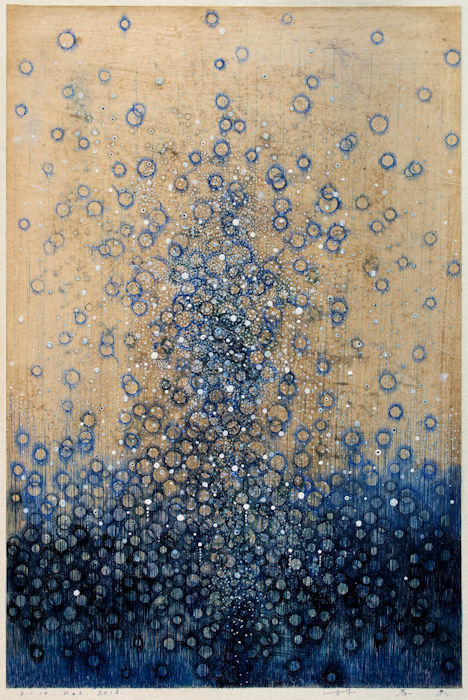
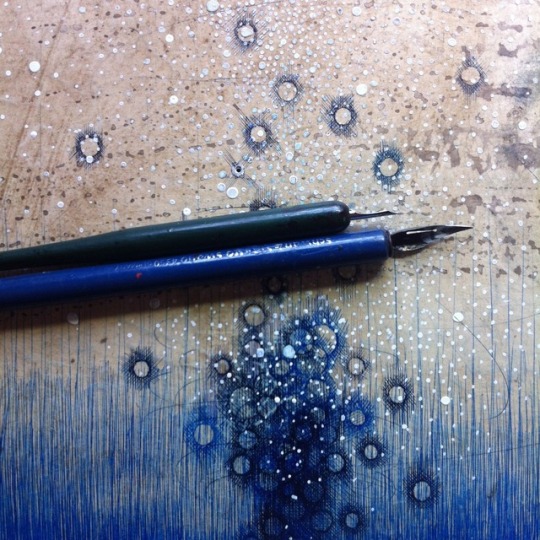
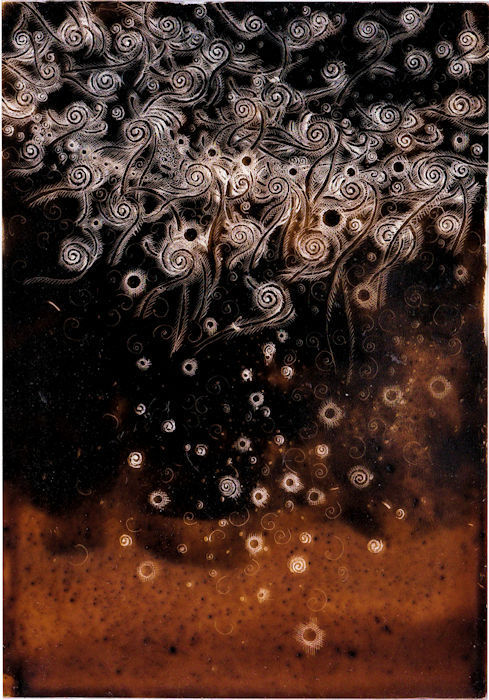
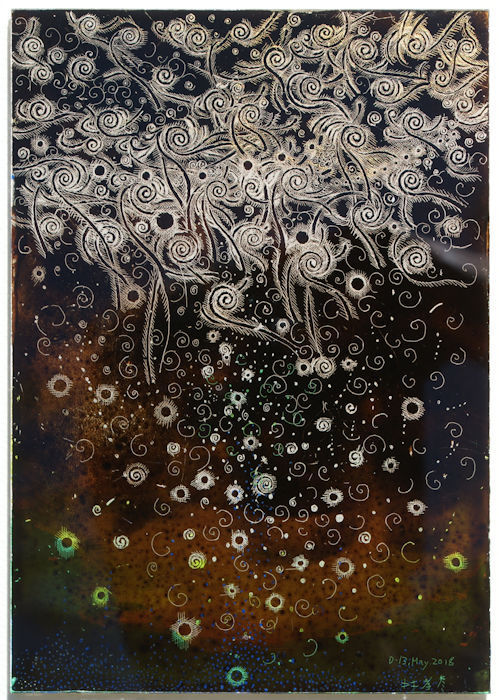
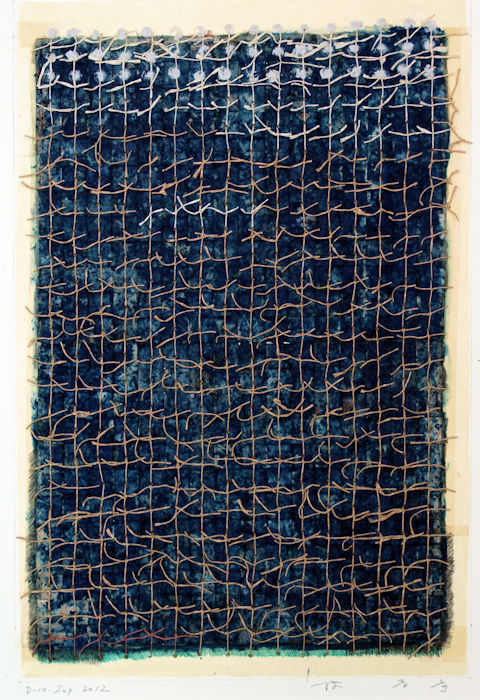
Takahiko Hayashi (Japanese , b.1961) - Backbone of the Wind
w.i.p. copper plate engraving for print - 4th Apr.2017
w.i.p. copper plate engraving for print - 13th Apr.2017
Kesaranpasaran - w.i.p. printing - copper engraving - 2017
Kesaranpasaran - copper engraving - June 2017
Existence - copperplate intaglio print with chine colle’ - 1986
D-10 Feb.2018 - pen drawing on Gampi paper
D-10 Feb.2018 (detail - w.i.p.) - pen drawing on Gampi paper
D-13 May 2018 - w.i.p. scratching reverse painting on glass, photo from back
D-13 May 2018 - reverse painting on glass
D-10 Sep.2012 - mixed media painting & paper
The mixed-media paintings/drawings are a diary titled with the date of creation.
“I try to create something from nothing. I try to capture negative to represent positive. I try to express the present with history, and east and west. It is when objects exist that nothingness can be recognized for the first time. That’s why wind attracts me. And Tokuyama village in Gifu prefecture, Lao-Tse, and Enku greatly influence my thought processes”
Gampi paper is made from the inner bark of the gampi bush which must be obtained in the wild. Japanese gampi is very shiny even after being formed into paper. Gampi is favored by artists who want tone and a luminous surface for all types of printing, calligraphy, collage, and drawing. Gampi papers have natural sizing, restricting the amount of bleed when written or painted on.
http://takahikohayashi.tumblr.com
#Takahiko Hayashi#art by others#other's artwork#etching#engraving#drawing#painting#reverse painting on glass#pen & ink#Gifu prefecture
12 notes
·
View notes
Photo

Paintings vlog takahikohayashi:D-12.Dec.2017 pen drawing on Gampi paper... via Tumblr
1 note
·
View note
Photo
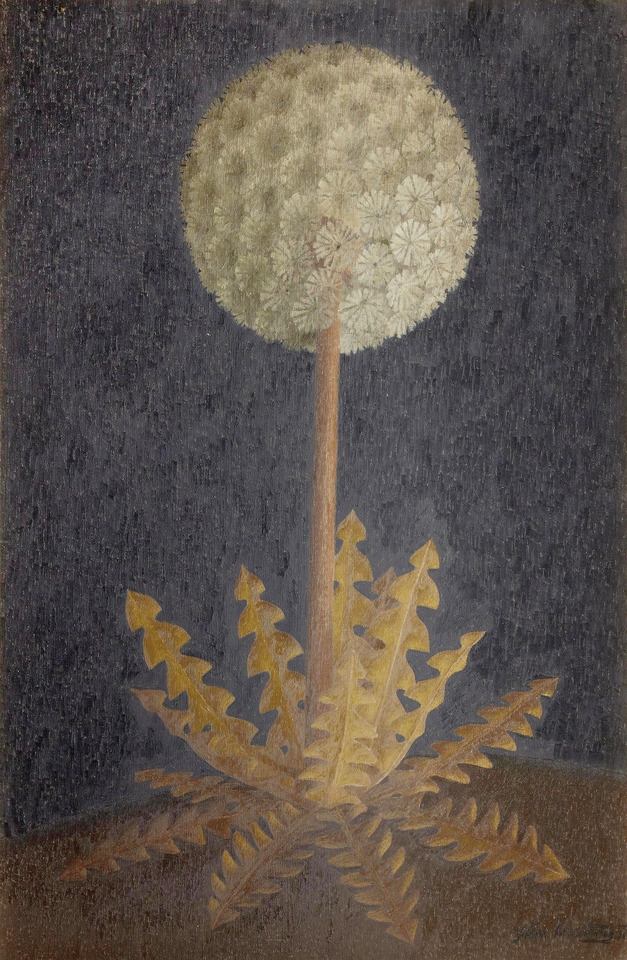
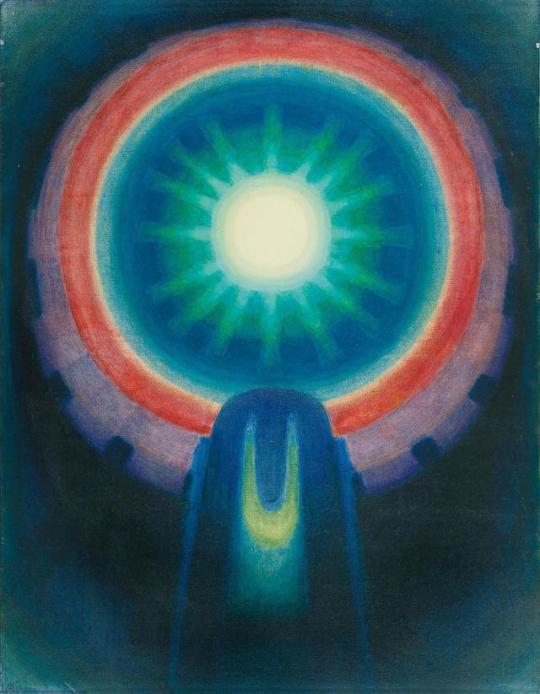
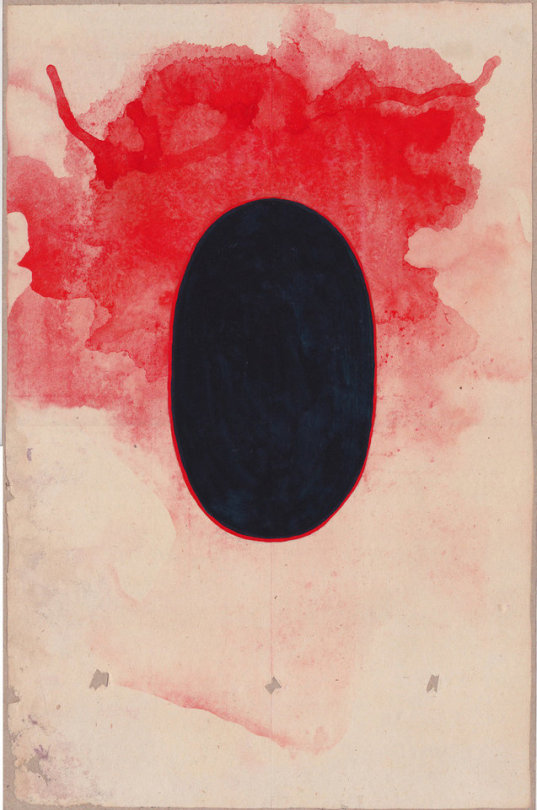

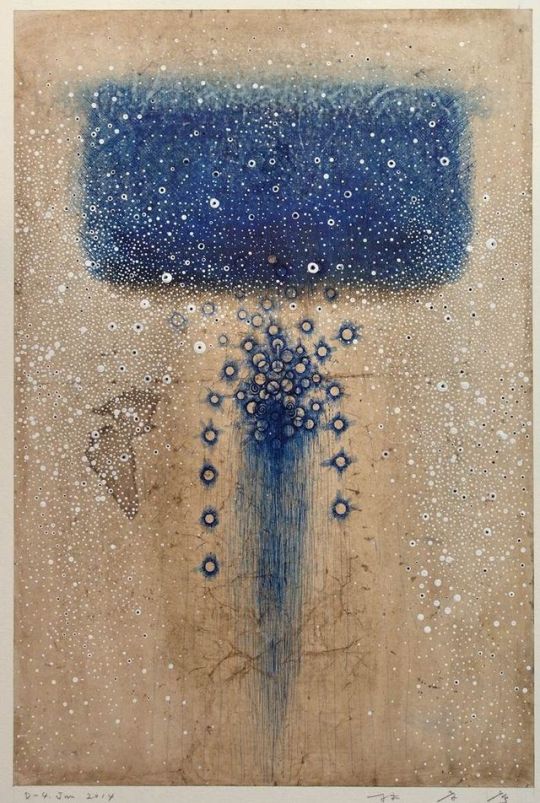
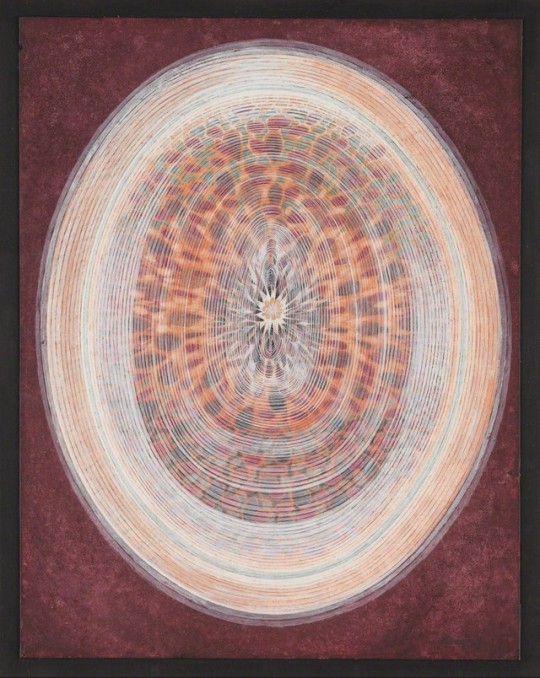
A series of related images.
John Armstrong (British 1893- 1973). Dandelion 1958. Oil on canvas, 35.8 x 24 inches. Source.
Biren De (Indian, 1926-2011). April ’73 1973 oil on canvas, 52 x 40 inches. Source.
Anonymous, Rajasthan, India. C. 2002. Mixed media on salvaged paper, size unknown. Source.
Hayashi Takahiko (Japanese b. 1961). D-17 Apr. 2014 2014. Ink (pen drawing) on gampi paper mounted onto Hahnemühle paper, 16 3/8 x 11 1/16 inches. Source.
Hayashi Takahiko (Japanese b. 1961). D-4 Jun. 2014. Ink (pen drawing) on gampi paper mounted onto Hahnemühle paper, (size?). Source Pinterest.
Leo Kenney (American 1925-2001). Seed and Beyond II 1964. Gouache on Chinese paper mounted on wood, 19 1/4 x 15 inches. Seattle Art Museum. Source.
1 note
·
View note
Text
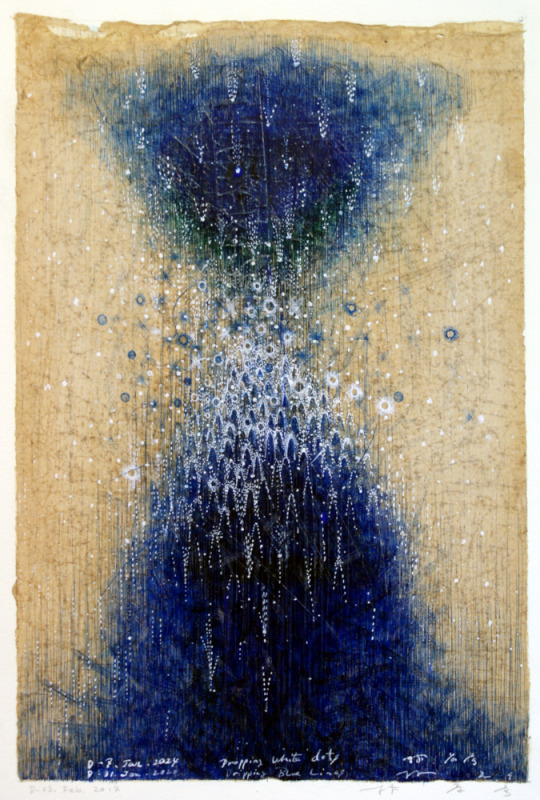
D-7.Jan.2024 Dropping white dots
(retouched on D-31.Jan.2020/ D-23.Feb.2017)
Image: 42 x 28cm
Paper: 53.5 x 39.5cm
©Takahiko HAYASHI 林孝彦 2024
Description: acrylic ink on paper/ original emulsion base
Material: Gampi paper, Hahnemühle paper
#available#blue#pen drawing on gampi paper#2024 takahiko hayashi#2020 takahiko hayashi#2017 takahiko hayashi
48 notes
·
View notes
Text
Hyperallergic: Creature Discomfort: Art in the Cycle of History
Thomas Houseago, “Giant Figure (Cyclops)” (2011), bronze (all photos by the author for Hyperallergic)
LOS ANGELES — Creature, a thematic exhibition at The Broad, is one of those shows, like the recently opened Raymond Pettibon: A Pen of All Work at the New Museum in New York, whose meanings and context have been jolted, scrambled, and reloaded by the resistible rise of Donald J. Trump.
As it so happens, Creature opened on November 5th, the Saturday before the election, and the darkly mystical among us might regard that coincidence, accompanied by the exhibition’s looming mascot, “Giant Figure (Cyclops)” (2011), a nearly 15-foot-high bronze by the English sculpture Thomas Houseago, as harbingers of the wreckage to come.
I wouldn’t disagree. The exhibition, a reshuffling of the Broad’s permanent collection, was originally intended, according to an announcement published in August, to present “approaches to figuration and representations of the self”:
Ranging from artworks that examine the human body, to others that allude to a physical presence outside of the artwork itself, Creature offers an array of lenses through which to view the human experience, some scientifically based and others drawing inspiration from cultural representations of how living things change over time.
But in the looking-glass world of Trump, Houseago’s colossus — a fierce, robot-like compaction of bronze-cast clay slabs and blocks of wood that ranges uncomfortably across the bombast of Antoine Bourdelle, the majesty of samurai armor, and the artlessness of a Lego toy — cannot be read as anything other than a personification of imminent authoritarianism. With its single, hollow eye, the symbol of a blinkered worldview, “Giant Figure (Cyclops)” comes off as an outsized guardian figure/Star Wars shock trooper primed to stomp the first outbreak of dissent.
David Wojnarowicz, “Late Afternoon in the Forest” (1986), acrylic, spray paint, and collage on muslin
Similarly, “Late Afternoon in the Forest” (1986), a painting in acrylic, spray paint, and collage on muslin by David Wojnarowicz, attains a renewed severity in light of the kakistocracy — a term (“rule by the worst”) recently popularized by Paul Krugman — that took power one tumultuous month ago.
A fantastical twilit scene painted in sumptuous shades of dark gray, green, and blue, “Late Afternoon” depicts a rocky clearing in the woods dominated by the wreckage of a camouflaged jet fighter-cum-skeletal monster and a giant Olmec-style head with its lips stitched together, a parallel to Wojnarowicz’s own sewn-up lips in the famously harrowing photograph featured on the poster of Rosa von Praunheim’s documentary Silence=Death (1989).
That film was a protest against the Reagan administration’s malign neglect of the victims of AIDS, which killed Wojnarowicz in 1992, but the painting’s thrust is elusive. Its deep shadows and curious details — a tiny, four-armed angel and an equally diminutive centaur battling a lapith (appropriated from the Parthenon, which is glimpsed, in the upper left corner, in duplicate sun-drenched images, two of which flank a postcard view of the south façade of the White House) — conspire to imply that perpetual war (the jet fighter, centaur, and lapith) are God’s gift (the angel) to civilization, no matter how ancient of modern.
But it also may mean nothing of the sort; it can be unpacked any number of ways, none of them comforting to the dominant culture. Whatever the intent, the painting revels in a brazenly abstruse set of pictorial signs whose solidity and invention are the source of its power.
Jenny Holzer, “Laments: I was sick of acting normal…” (1989), detail, black granite sarcophagus with electronic LED sign
Jenny Holzer’s “Lamentations” are here, in black granite (1989) and LED (1987):
I WAS SICK FROM ACTING NORMAL.
I WATCHED REPLAYS OF THE WAR.
WHEN NOTHING HAPPENED I CLOSED A ZONE WHERE I EXERT CONTROL.
I FORMED A GOVERNMENT THAT WAS AS WELCOME AS SEX.
Pinned to an adjacent wall, one of Kiki Smith’s most trenchantly abject works from the Bush I years, “Untitled (Red Man)” (1991), a flayed skin in Gampi paper drenched in red ink, with head and arms ripped from torso, seems to spring forth from another of Holzer’s gnomic phrases, “I GIVE PEOPLE TIME SO THEY FEEL THEIR LIVES MOVING OVER THEIR SKINS.”
Holzer and Smith, like Wojnarowicz, emerged from the caldron of the 1980s, the sharp right turn in American politics that eventually, and inevitably, spewed out Reagan’s scabrous spawn: the witless dauphin singularly responsible for every catastrophe now afflicting the world, and the tangerine golem who has promised to make matters even worse.
Kiki Smith, “Untitled (Red Man)” (1991), ink on Gampi paper in four parts
And so it makes sense, at this most critical moment, to take a serious look at the art they made at that time, its political fury and layered poetics, as an anchor in the storm. In many cases, the passage of time has only strengthened their artworks’ hold on the unalterable realities of our current system, even as they infect the newer objects in the show with a heightened political consciousness made all the more palpable by dint of the recent shift in context.
A piece like Tony Oursler’s “Dust” (2006), a video projection on a large, undulating white sphere, was originally meant to represent, as the wall text puts it, a “microscopic molecule” that would lead us to an “awareness of our own physical presence.” But as ghostly eyes and mouths appear and disappear in the recesses of what looks more like a cloud than a speck of dust, Oursler’s object seems to personify the national security state rather than a contemplation of our brief existence.
Piotr Uklański, “The Nazis” (1998), detail, chromogenic black and white and color photographs mounted on panels, in 164 parts
Likewise, Piotr Uklański’s “The Nazis” (1998), a grid of 164 head shots of Hollywood actors, including Ronald Reagan, donning the togs of an SS officer, seemed 20 years ago like an elaborate one liner, but now with the term “Fascist America” being bandied about with increasing frequency since January 20th, it demands at least a double-take.
An even larger grid, Josh Smith’s show-stopping, mural-sized “Venice Set” (2011) is composed of 30 scuffed-up cardboard sheets (redolent of the Occupy Movement) smeared with white, pink, red, and green paint and collaged with images of whales, stop signs, autumn leaves, and skeletons. In the face of Trump’s predatory capitalist/eco-barbarian cabinet, the work becomes less an “escalating index of forms ready to be recycled,” as we’re told by the wall label, than an indicator of the environmental and economic destruction still to come.
Leon Golub, “Mercenaries V” (1984), acrylic on linen (left) and “Interrogation I” (1981), acrylic on linen (right)
In yet another unanticipated twist, I happened to visit the museum on the Day Without Immigrants, a protest that provided an additional note of urgency to the imagery on display — particularly that of Leon Golub, whose work fills an entire room: six epic paintings from 1980 through ’88, a kind of Reagan-era Pauline Chapel with a naked torture victim hanging upside-down in the place of the crucified St. Peter.
These paintings are of a piece with “White Squad I” (1982), currently on view at the Whitney Museum of American Art as part of the exhibition, Fast Forward: Painting from the 1980s. The Broad’s selection, which includes the finest examples of Golub’s work anywhere, cycles through the artist’s evolution from the abstract red oxide fields, gleaned from Imperial Roman frescos, upon which he splays his soldiers of fortune like paper cutouts (“Mercenaries,” 1980), to the more realistic settings of “Interrogation I” (1980-81), “Mercenaries V” (1984), and “White Squad V” (1984) and their explicit acts of torture and brutality. (The gallery, in fact, has posted a trigger warning.)
Later, Golub concentrated on ambiguous images of generalized panic (“Threnody I,” 1986), urban thuggery, and regular working folk, and finally rounded out the decade in a mythic mode (the two-headed “Wounded Sphinx,” 1988), which returns to the abstracted red oxide field he used in 1980. To be surrounded by these works in a single room is an overwhelming experience.
Leon Golub, “Interrogation I” (1981), acrylic on linen
Golub’s paintings of mercenaries and death squads are lasting testaments to the US proxy wars in Central America and President Reagan’s support for the brutal military dictatorships that made life unlivable in countries like Guatemala, El Salvador, and Honduras, precipitating an exodus of refugees that streamed northward for better lives within the citadels of the empire.
If the violence in a painting like “Interrogation I” feels timeless, with its jackbooted guards pummeling the above-mentioned naked victim with a steel pipe as he hangs by his feet like Titian’s Marsyas or Rembrandt’s slaughtered ox, his face obscured by foreshortening, his scrotum beaten to jelly, that impression is derived as much from the inventiveness of the composition — dominated by a controlled explosion of diagonals (steel pipe, holster strap, nude legs, rope ends) — as from the shape-shifting nature of barbarity itself.
But it’s also the painting’s reflection of a specific cycle of history that makes its imagery feel as current as the evening news — a perspective that frames Trump alongside Reagan, whose interventionist policies exacerbated the xenophobia that Trump exploited (through the scorched-earth tactics of his unspeakable mentor Roy Cohn) to seize ultimate power.
In a very real sense, Golub’s human monsters — his hired killers and cretinous torturers — are as mythic as his two-headed sphinx, embodying a recidivism that defies all appeal to humanity and reason, an indelible part of our past that remains locked into the foreseeable future.
Creature continues at The Broad (221 S. Grand Avenue, Los Angeles, California) through March 19.
The post Creature Discomfort: Art in the Cycle of History appeared first on Hyperallergic.
from Hyperallergic http://ift.tt/2lQfRnh
via IFTTT
0 notes
Text

D-23.Oct.2023 Takahiko Hayashi
66x51cm pen drawing, collage on Sukijimai Gampi paper
林孝彦 Takahiko Hayashi 2023
#林孝彦#2023 takahiko hayashi#pen drawing on gampi paper#collage#unreleased item#inventory hidaka#available
43 notes
·
View notes
Text
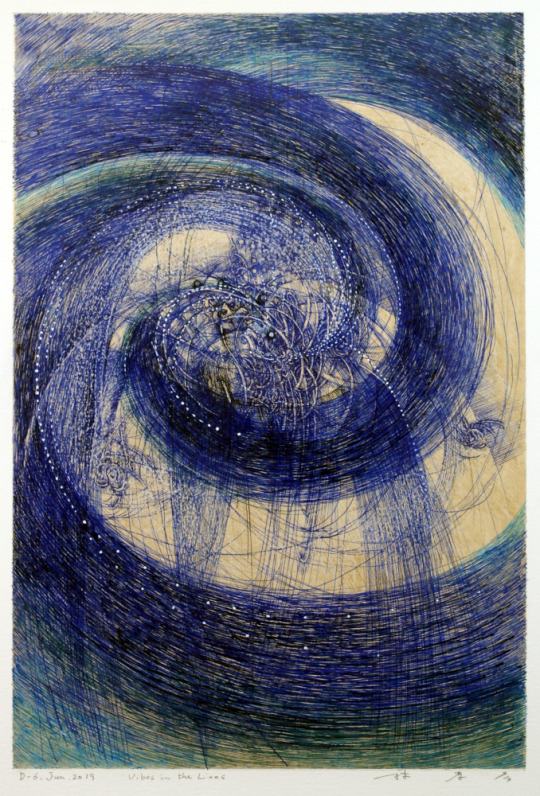
D-6.Jun.2019 Vibes in Lines 42x28cm
Takahiko Hayashi 林孝彦 2019
Pigment acrylic ink on Paper/ original emulsion base
image size: 42x28cm (Japanese Gampi paper)
paper size: 53.5x39.7cm (Hahnemuhle5761)
#deta organization 2023#available#inventory hidaka#2019 takahiko hayashi#pen drawing on gampi paper#blue
36 notes
·
View notes
Text

D-4.Feb.2024 (retouched on D-17.Feb.2017)
Breath of life, breath of line
Image: 41.5 x 27.7cm
Paper: 54.0 x 39.0cm
Takahiko HAYASHI 林孝彦 2024
Description: acrylic ink on paper/ original emulsion base
Material: Gampi paper, Hahnemühle paper
17 notes
·
View notes
Text

Title: D-20.Mar.2006 夜を放つもの
Name: takahiko HAYASHI
Image: 30 x 42.5cm
Paper: 39.5 x 53.5cm
Technique: acrylic ink, indigo, kakishibu on paper
Description: original emulsion base
Material: Washi(Gampi), Hahnemühle paper
16 notes
·
View notes
Text
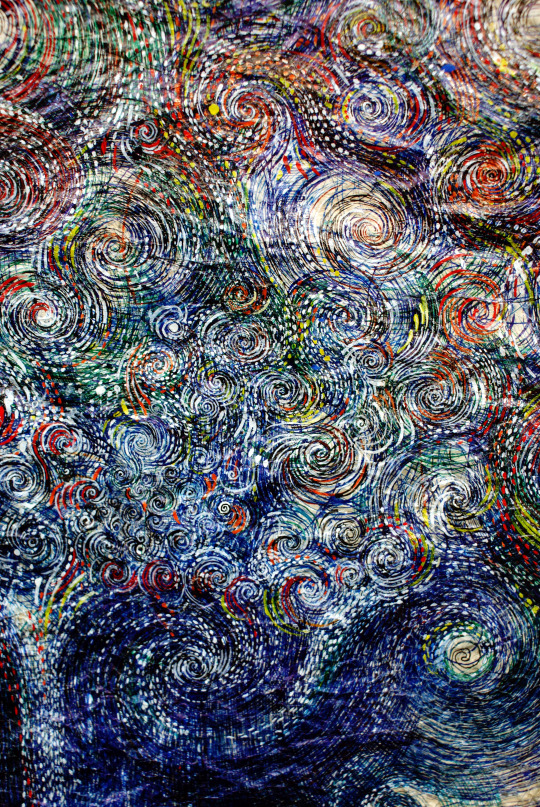
D-7.Apr.2023 / a detail
Takahiko Hayashi
22 notes
·
View notes
Text
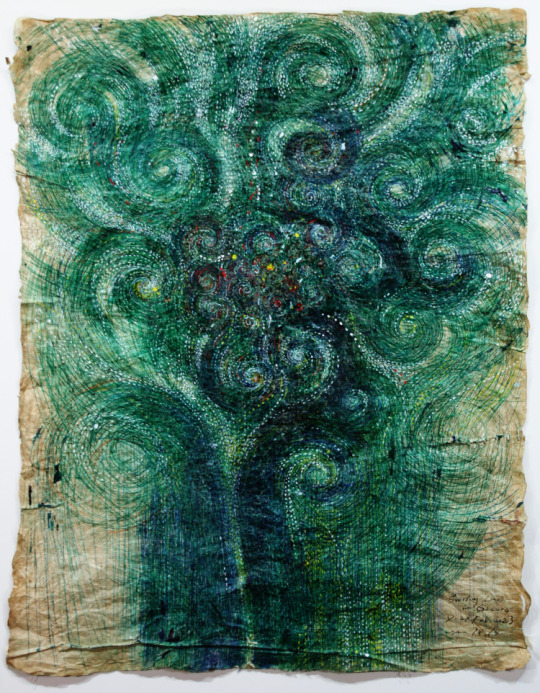
Swirling lines in Green D-23.Feb.2023
pen drawing on Sukijimai Gampi paer
64x50cm 林孝彦 Takahiko Hayashi
30 notes
·
View notes
Text
D-29.Mar.2022
TAKAHIKO HAYASHI Exhibition at Froelick Gallery
2 MARCH - 11 APRIL 2023
#2022 takahiko hayashi#2023 exhibition#pen drawing on paper#pen drawing on gampi paper#Froelick Gallery#blue#washi
4 notes
·
View notes